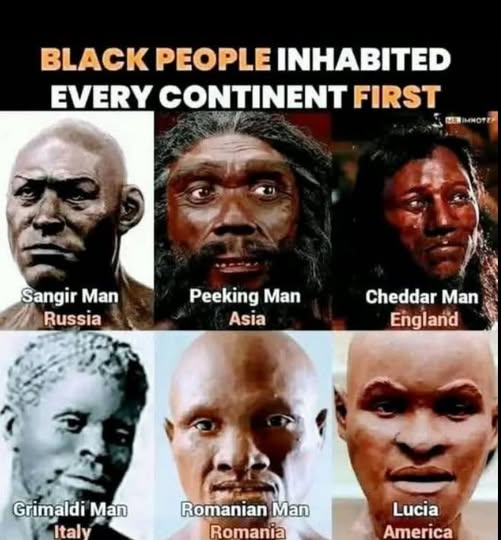
Imagine tracing the incredible story of human evolution all the way back to its origin in Africa, where modern Homo sapiens first emerged 200,000 to 300,000 years ago. From this cradle of humanity, our ancestors began a monumental migration 60,000 to 80,000 years ago, carrying with them the dark skin adapted to the intense sun of their homeland. As they spread across the globe, these journeys gave rise to the breathtaking diversity of people we see today diversity shaped by geography, climate, and culture.
Cheddar Man: A Closer Look at Early Europeans
One fascinating example that challenges our perceptions of early human populations comes from Cheddar Man, a man who lived about 10,000 years ago in what is now England. DNA analysis of Cheddar Man’s remains has revealed that he had dark skin, blue eyes, and curly hair a striking combination that defies the typical image of early Europeans as light-skinned individuals. This discovery invites us to rethink how ancient populations adapted to their environments and challenges the outdated notion of a singular, monolithic “European” identity.
Lucia: A Puzzle from Brazil
Meanwhile, in Brazil, the skeleton of a woman known as Lucia dating back about 11,500 years has sparked a significant debate among scientists. Her features, including her skull shape, suggest potential links to both Indigenous Australians and African populations, highlighting the complex web of migration that shaped the early populations of the Americas. These connections deepen our understanding of how ancient humans traveled and settled across continents, revealing that the settlement of the Americas may have been far more diverse and intricate than we once thought.
Grimaldi Man: Evidence of African-Like Traits in Europe
Moving further into Europe, the remains of the Grimaldi Man, who lived between 20,000 to 30,000 years ago in what is now Italy, once led researchers to speculate that early Europeans might have had African-like traits. While these theories have since been approached with more caution, the Grimaldi Man’s remains continue to challenge simplistic narratives about human evolution. His story is part of the broader European migration puzzle, showing how intertwined African and European populations were in prehistory.
The Enigmatic “Romanian Man” and “Sangir Man”
The mystery surrounding other early humans, like Romanian Man and Sangir Man, continues to puzzle researchers. Reconstructions of their faces often blend scientific evidence with educated speculation, as these figures remain less clearly defined in the fossil record. These cases highlight the complexity of human evolution, where the truth lies somewhere between known facts and ongoing discovery, reminding us that the human story is far from linear.
Peking Man: A Glimpse into Human Evolution
In the east, we find Peking Man, not a modern human, but an ancestor a Homo erectus who lived in China around 700,000 years ago. Peking Man’s discovery takes us far back into human history, long before Homo sapiens appeared, showing that our evolutionary journey is deep and long-winded. He lived in a world vastly different from ours, yet his existence lays the foundation for understanding how Homo sapiens would eventually evolve and spread across the globe.
Shared Roots and a Complex Past
All of these remarkable discoveries spanning continents and millennia point to one undeniable truth: humanity’s roots are shared. Our past is more diverse, more complex, and far more interwoven than we often realize. The human story is not a simple narrative of one group of people developing in isolation. It is a story of migration, adaptation, and resilience, shaped by the interconnectedness of human populations.
While some older reconstructions and popular images may mislead us, modern science—through genetic analysis, archaeology, and fossil studies is continuously unraveling the deeper layers of our shared history. The more we learn, the more we realize that our ancestors were not isolated in neatly defined regions but were part of a much larger and more dynamic tapestry of human life.
A Unified Human Story
As we continue to uncover these stories from our past, we begin to see that humanity’s diversity the colors of our skin, the shapes of our eyes, the textures of our hair isn’t just the result of geography or culture, but of a vast, interconnected journey that spans tens of thousands of years. From Africa to the Americas, from Europe to Asia, our ancestors left their mark on the world in ways that still echo today.
As science progresses, we’re learning more about how human beings have always been resilient, adaptable, and fundamentally interconnected. The human story is our collective story, shaped by migration, shared ancestry, and the desire to adapt and thrive in every corner of the globe.
Leave a Reply